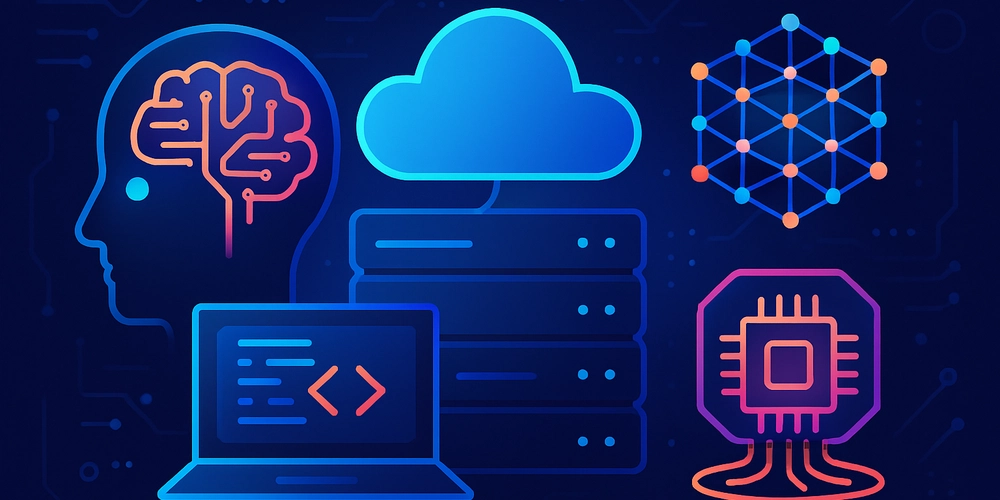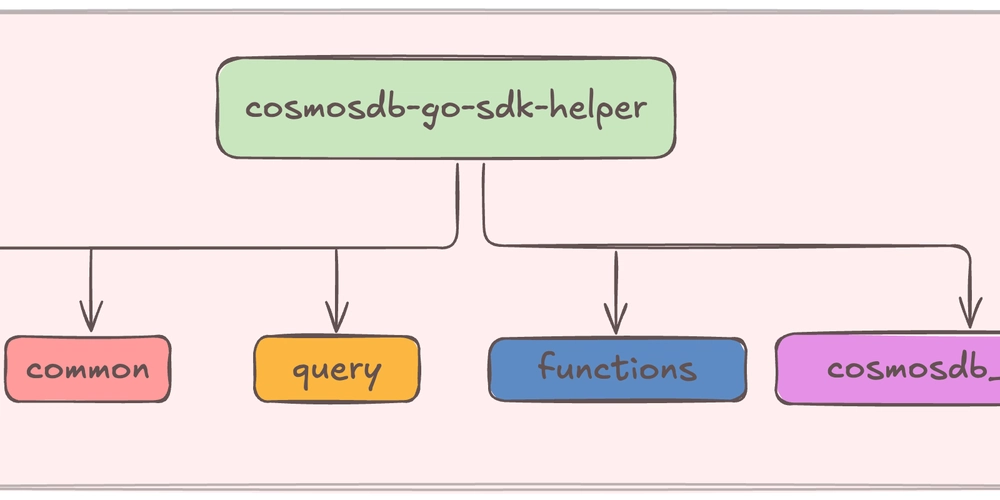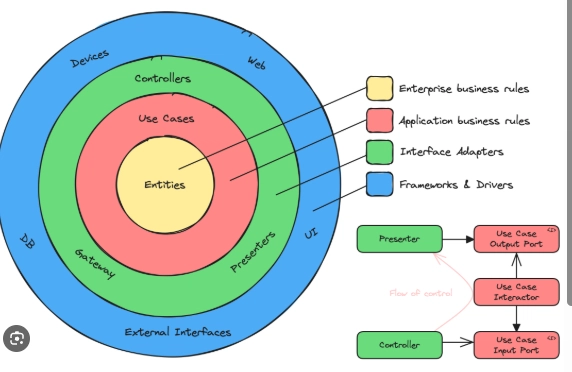Unveiling Open CASCADE Technology Public License 6.6: A Holistic Exploration of Open Source Fair Code Licensing
Abstract: This post provides a comprehensive exploration of the Open CASCADE Technology Public License 6.6 (OCTPL 6.6), a robust open source and fair code license designed for sustainable software development. We discuss the license’s origins, core principles, comparative features, practical use cases, challenges, and future prospects. With technical clarity and accessible language, this article integrates detailed analyses, tables, and bullet lists to aid both developers and decision-makers in navigating the evolving landscape of open source licensing. For a deeper dive into OCTPL 6.6, read the original article. Introduction The world of open source and fair code licensing is evolving rapidly. New licenses emerge with well-crafted clauses designed not only to protect code but also to guard the rights of contributors. One such license is the Open CASCADE Technology Public License 6.6 (OCTPL 6.6). This post delves into its comprehensive framework, its historical roots, technical features, and potential use cases. By integrating community feedback and comparisons with other licenses, we aim to present a clear picture of how OCTPL 6.6 contributes to sustainable open source development. Background and Context OCTPL 6.6 was developed during a period when the open source community began questioning conventional donation-based funding methods and the exposure of contributors to possible exploitation. Traditional licenses, such as the MIT License and the GNU GPL, offered simplicity and robust copyleft measures respectively. However, they often lacked mechanisms to ensure fair compensation for the developers behind the code. Early in its development, legal and software experts recognized the need for a license that maintains legal robustness while promoting community collaboration. The historical evolution of this license is significantly influenced by the debates on open source funding and the emerging models of fair code practices. OCTPL 6.6 is a response to these challenges; it incorporates detailed legal clauses aimed at preventing the commercial exploitation of open source projects without adequately rewarding the creators. The broader ecosystem of open source licensing also includes initiatives such as the Open Compensation Token License (OCTL) that integrate blockchain technology to enforce compensation transparently. Unlike OCTL, OCTPL 6.6 relies on traditional legal frameworks but still offers structured guidance to ensure that software contributors receive due recognition. Core Concepts and Features OCTPL 6.6 is structured around several core principles, which help balance freedom with enforcement: Legal Robustness: The license includes detailed legal wording intended to prevent corporate misuse and exploitation of open source code. This helps create a safe environment for developers to contribute their work. Fair Developer Compensation: At the heart of OCTPL 6.6 is the focus on fairness. It provides guidelines for compensating developers, ensuring that when their code is used commercially, the original contributors are acknowledged and fairly rewarded. Community-Driven Innovation: By emphasizing transparency and clear clauses, OCTPL 6.6 encourages community involvement. Developers can collaborate confidently, knowing the license protects their contributions. Flexibility Across Industries: Originally designed for industrial applications such as CAD and computational geometry, OCTPL 6.6’s adaptability makes it suitable for diverse projects. Its structure is robust enough to address legal complexities in high-stakes technological environments. A closer look at its features can be summarized in the following bullet list: Detailed Compensation Provisions: Enforced through legal text rather than relying solely on voluntary donations. Restricted Code Mixing: Certain restrictive clauses ensure that code cannot easily be merged with other licenses without proper compliance. Dual Licensing Potential: Although challenging from a legal standpoint, the license supports dual licensing, allowing projects to engage both community and commercial users. Comparative Transparency: While the language can be dense, many experienced legal teams find it sufficiently comprehensive for protecting open source contributions. Comparative Analysis Understanding how OCTPL 6.6 stacks up against other licenses is critical. The table below presents a comparative view of OCTPL 6.6 and several widely used licenses. License Compensation Mechanism Transparency Flexibility Copyleft / Permissiveness Fairness for Developer OCTPL 6.6 Provides legal guidelines for fair compensation. Detailed but may appear dense to newcomers. Moderate; industrial focus. Enforces robust copyleft restrictions. Focused on preventing exploitation. OCTL Blockchain-based, automated compensation mechanisms. Highly transparent with blockchain immutability. Highly flexible; tailored fo

Abstract:
This post provides a comprehensive exploration of the Open CASCADE Technology Public License 6.6 (OCTPL 6.6), a robust open source and fair code license designed for sustainable software development. We discuss the license’s origins, core principles, comparative features, practical use cases, challenges, and future prospects. With technical clarity and accessible language, this article integrates detailed analyses, tables, and bullet lists to aid both developers and decision-makers in navigating the evolving landscape of open source licensing. For a deeper dive into OCTPL 6.6, read the original article.
Introduction
The world of open source and fair code licensing is evolving rapidly. New licenses emerge with well-crafted clauses designed not only to protect code but also to guard the rights of contributors. One such license is the Open CASCADE Technology Public License 6.6 (OCTPL 6.6). This post delves into its comprehensive framework, its historical roots, technical features, and potential use cases. By integrating community feedback and comparisons with other licenses, we aim to present a clear picture of how OCTPL 6.6 contributes to sustainable open source development.
Background and Context
OCTPL 6.6 was developed during a period when the open source community began questioning conventional donation-based funding methods and the exposure of contributors to possible exploitation. Traditional licenses, such as the MIT License and the GNU GPL, offered simplicity and robust copyleft measures respectively. However, they often lacked mechanisms to ensure fair compensation for the developers behind the code.
Early in its development, legal and software experts recognized the need for a license that maintains legal robustness while promoting community collaboration. The historical evolution of this license is significantly influenced by the debates on open source funding and the emerging models of fair code practices. OCTPL 6.6 is a response to these challenges; it incorporates detailed legal clauses aimed at preventing the commercial exploitation of open source projects without adequately rewarding the creators.
The broader ecosystem of open source licensing also includes initiatives such as the Open Compensation Token License (OCTL) that integrate blockchain technology to enforce compensation transparently. Unlike OCTL, OCTPL 6.6 relies on traditional legal frameworks but still offers structured guidance to ensure that software contributors receive due recognition.
Core Concepts and Features
OCTPL 6.6 is structured around several core principles, which help balance freedom with enforcement:
- Legal Robustness: The license includes detailed legal wording intended to prevent corporate misuse and exploitation of open source code. This helps create a safe environment for developers to contribute their work.
- Fair Developer Compensation: At the heart of OCTPL 6.6 is the focus on fairness. It provides guidelines for compensating developers, ensuring that when their code is used commercially, the original contributors are acknowledged and fairly rewarded.
- Community-Driven Innovation: By emphasizing transparency and clear clauses, OCTPL 6.6 encourages community involvement. Developers can collaborate confidently, knowing the license protects their contributions.
- Flexibility Across Industries: Originally designed for industrial applications such as CAD and computational geometry, OCTPL 6.6’s adaptability makes it suitable for diverse projects. Its structure is robust enough to address legal complexities in high-stakes technological environments.
A closer look at its features can be summarized in the following bullet list:
- Detailed Compensation Provisions: Enforced through legal text rather than relying solely on voluntary donations.
- Restricted Code Mixing: Certain restrictive clauses ensure that code cannot easily be merged with other licenses without proper compliance.
- Dual Licensing Potential: Although challenging from a legal standpoint, the license supports dual licensing, allowing projects to engage both community and commercial users.
- Comparative Transparency: While the language can be dense, many experienced legal teams find it sufficiently comprehensive for protecting open source contributions.
Comparative Analysis
Understanding how OCTPL 6.6 stacks up against other licenses is critical. The table below presents a comparative view of OCTPL 6.6 and several widely used licenses.
| License | Compensation Mechanism | Transparency | Flexibility | Copyleft / Permissiveness | Fairness for Developer |
|---|---|---|---|---|---|
| OCTPL 6.6 | Provides legal guidelines for fair compensation. | Detailed but may appear dense to newcomers. | Moderate; industrial focus. | Enforces robust copyleft restrictions. | Focused on preventing exploitation. |
| OCTL | Blockchain-based, automated compensation mechanisms. | Highly transparent with blockchain immutability. | Highly flexible; tailored for emerging tech. | Primarily permissive with fairness built in. | Enhanced fairness via decentralization. |
| MIT License | Minimal; relies on voluntary donations. | Very simple and clear language. | Extremely flexible and widely adopted. | Permissive with minimal restrictions. | Risk of commercial exploitation without rewards. |
| Apache 2.0 License | Modest protection; does not enforce developer compensation mandates. | Extensive and robust legal language. | Balances permissiveness with patent protection. | Mix of permissive and protective clauses. | Fairness partially addressed via patent rights. |
| GNU GPL v3 | No explicit compensation mechanisms. | Very transparent with well-defined obligations. | Strict copyleft restricts commercial flexibility. | Strictly enforced copyleft. | Limits exploitation but no direct remuneration. |
Note: This comparative table is a simplified summary meant for quick reference.
Applications and Use Cases
OCTPL 6.6 finds applications across various industries where intellectual property and licensing clarity are essential. Below are some practical examples:
Industrial CAD and Engineering Software:
Projects requiring robust legal frameworks, such as computer-aided design (CAD) systems, widely adopt OCTPL 6.6. The license helps ensure that even when commercial entities integrate the software, original code contributors remain recognized and compensated. Organizations working with complex engineering software appreciate the balance of legal comprehensiveness and community-driven innovation.Computational Geometry & Scientific Projects:
In fields where precision is critical, such as computational geometry, the detailed legal clauses in OCTPL 6.6 provide engineers and researchers with a reliable licensing model. This ensures that their intellectual property is guarded while still promoting collaborative research and development. Academic institutions and research labs have started to explore OCTPL 6.6 as a standard for sustainable development and innovation.Emerging Blockchain Ecosystems:
While OCTPL 6.6 does not feature blockchain integration as native as OCTL, its design serves as an important benchmark when discussing how open source licenses can evolve. Projects using blockchain for funding and transparency, such as those detailed in articles like License Token Innovative Licensing for Open Source, benefit from a comparison with OCTPL 6.6, prompting further innovations in fair code licensing practices.
Challenges and Limitations
Every licensing model comes with its own set of challenges and barriers. OCTPL 6.6 is no exception. Here are some critical challenges:
Legal Complexity:
The license’s detailed legal language, while robust, can be challenging for small projects and individual developers to parse without expert legal advice. This complexity may inhibit adoption among less-resourced teams.Code Mixing and Compatibility:
OCTPL 6.6’s restrictive clauses may lead to licensing incompatibilities when merging code from projects under more permissive or differently structured licenses. Developers must proceed carefully, often consulting legal support, which can slow down development velocity.Enforcement Challenges:
Ensuring fair compensation in practice requires legal enforcement, which can be both time-consuming and costly, especially on an international scale. This is an ongoing debate in the open source community, as evidenced in discussions on Stack Overflow and Hacker News.Dual Licensing Complexity:
While dual licensing is possible, managing two sets of license agreements adds legal overhead. This might deter smaller projects from adopting such a model compared to straightforward permissive licenses like MIT or Apache 2.0.
Future Outlook and Innovations
As the open source ecosystem matures, the future of licenses like OCTPL 6.6 appears promising, yet full of challenges and opportunities for innovation.
Increased Blockchain Integration:
Future iterations might integrate native blockchain components to automate fairness in compensation, bridging the gap between traditional legal enforcement and modern technological transparency. The evolution observed in blockchain-integrated licenses such as OCTL offers a compelling roadmap.Evolving Legal Clarity:
As legal frameworks evolve, OCTPL 6.6 may be refined to offer clearer, more concise language without compromising on robustness. This could increase adoption among smaller teams, fostering greater community involvement.Wider Industry Adoption:
With a focus on sustainable software development, industries ranging from automotive to aerospace may increasingly turn to licenses that ensure fair compensation. As open source collaboration expands, OCTPL 6.6 could set benchmarks for both ethical and commercial software practices.Integration of Dual Licensing Models:
Continued experimentation with dual licensing can provide organizations the tools to benefit from open community contributions while also engaging lucrative commercial markets. This hybrid model may become a trend in supporting both open source and proprietary enterprise software development.Community-Driven Revisions:
Future editions could involve ongoing community feedback and incorporate modernization trends from forums like Reddit’s open source community and discussions on GitHub License Usage. Such iterative development ensures that the license remains adaptable in the face of rapid technological change.
Supplementary Resources and External Insights
For readers interested in exploring further, here are some selected links from the License Token platform that provide advanced insights on related subjects:
- Arbitrum and Open Source License Compatibility
- License Token Innovative Licensing for Open Source
- License Token Enhancing Open Source Project Visibility
- License Token Streamlining Open Source Compliance
- License Token Bridging the Gap in OSS Funding
Additionally, these selected posts from Dev.to provide a technical perspective on licensing and funding challenges in the open source space:
- Unveiling the EgenixCom Public License – Balancing Openness and Fairness in Open Source
- Funding Open Source Software: Ensuring Sustainability in the Digital Age
- Unveiling the FSF Unlimited License: A Fresh Perspective on Fair Code and Open Source
Summary
In summary, the Open CASCADE Technology Public License 6.6 represents a significant step forward in the evolution of open source and fair code licensing. Its blend of legal rigor, focus on developer compensation, and community-driven support offers a robust framework, especially for industrial and complex software projects. Although it faces challenges in legal complexity, code compatibility, and enforcement, its vision for fair compensation ensures that developers receive recognition and reward for their contributions.
OCTPL 6.6 is not just a legal document but a comprehensive guide intended to shape an equitable ecosystem for open source projects. Its continued evolution – possibly blending blockchain innovations and clearer legal language – will likely spur further adoption across diverse sectors.
By comparing OCTPL 6.6 with more permissive licenses like MIT and Apache 2.0, and noting its distinct emphasis on fairness and dual licensing potential, this post has outlined both the strengths and limitations of the license. For organizations keen on sustainable open source development and protecting developer rights, OCTPL 6.6 stands as an essential license model in today’s competitive technology landscape.
Key Takeaways
- Balanced Approach: OCTPL 6.6 marries traditional legal frameworks with fair compensation principles that push beyond standard open source licenses.
- Industry Relevance: Particularly suited for industrial, CAD, and scientific projects, where legal precision and sustainability are critical.
- Future Prospects: Areas for improvement include integrating blockchain elements, refining legal clarity, and expanding dual licensing models to secure broader adoption.
Through careful legal design and community feedback, OCTPL 6.6 aims to foster an environment where both innovation and fairness coexist. Developers and organizations are encouraged to review the original article and relevant resources to understand how this licensing model can power the next generation of open source projects.
By integrating structured analysis, comparative tables, and external insights, this exploration serves as a comprehensive guide for both technical professionals and legal advisors navigating open source licensing—a keystone for sustainable and fair software development in the digital age.









![Epic Games: Fortnite is offline for Apple devices worldwide after app store rejection [updated]](https://helios-i.mashable.com/imagery/articles/00T6DmFkLaAeJiMZlCJ7eUs/hero-image.fill.size_1200x675.v1747407583.jpg)

































































































































































![[The AI Show Episode 146]: Rise of “AI-First” Companies, AI Job Disruption, GPT-4o Update Gets Rolled Back, How Big Consulting Firms Use AI, and Meta AI App](https://www.marketingaiinstitute.com/hubfs/ep%20146%20cover.png)































































































































![How to make Developer Friends When You Don't Live in Silicon Valley, with Iraqi Engineer Code;Life [Podcast #172]](https://cdn.hashnode.com/res/hashnode/image/upload/v1747360508340/f07040cd-3eeb-443c-b4fb-370f6a4a14da.png?#)

















































































































.png?width=1920&height=1920&fit=bounds&quality=70&format=jpg&auto=webp#)





















![[Virtual Event] Strategic Security for the Modern Enterprise](https://eu-images.contentstack.com/v3/assets/blt6d90778a997de1cd/blt55e4e7e277520090/653a745a0e92cc040a3e9d7e/Dark_Reading_Logo_VirtualEvent_4C.png?width=1280&auto=webp&quality=80&disable=upscale#)














































































-xl-(1)-xl-xl.jpg)











![How to upgrade the M4 Mac mini SSD and save hundreds [Video]](https://i0.wp.com/9to5mac.com/wp-content/uploads/sites/6/2025/05/M4-Mac-mini-SSD-Upgrade-Tutorial-2TB.jpg?resize=1200%2C628&quality=82&strip=all&ssl=1)
![‘Apple in China’ book argues that the iPhone could be killed overnight [Updated]](https://i0.wp.com/9to5mac.com/wp-content/uploads/sites/6/2025/05/Apple-in-China-review.jpg?resize=1200%2C628&quality=82&strip=all&ssl=1)














![iPhone 17 Air Could Get a Boost From TDK's New Silicon Battery Tech [Report]](https://www.iclarified.com/images/news/97344/97344/97344-640.jpg)
![Vision Pro Owners Say They Regret $3,500 Purchase [WSJ]](https://www.iclarified.com/images/news/97347/97347/97347-640.jpg)
![Apple Showcases 'Magnifier on Mac' and 'Music Haptics' Accessibility Features [Video]](https://www.iclarified.com/images/news/97343/97343/97343-640.jpg)
![Sony WH-1000XM6 Unveiled With Smarter Noise Canceling and Studio-Tuned Sound [Video]](https://www.iclarified.com/images/news/97341/97341/97341-640.jpg)










































![Apple Stops Signing iPadOS 17.7.7 After Reports of App Login Issues [Updated]](https://images.macrumors.com/t/DoYicdwGvOHw-VKkuNvoxYs3pfo=/1920x/article-new/2023/06/ipados-17.jpg)





























